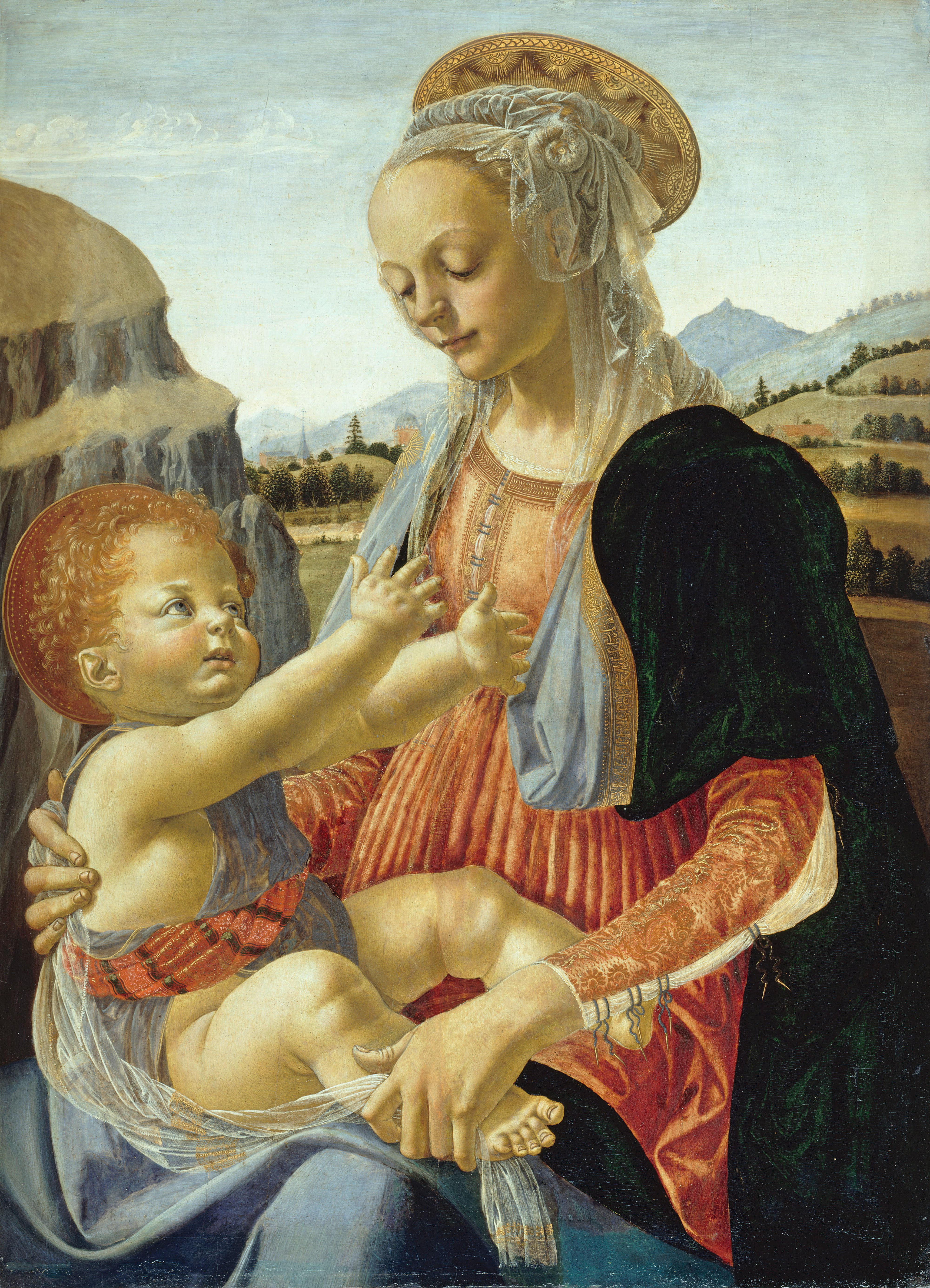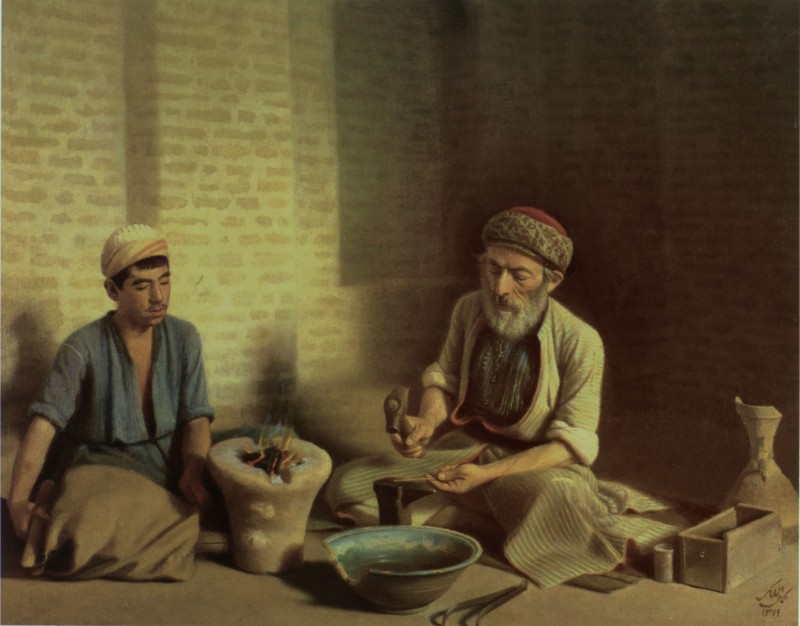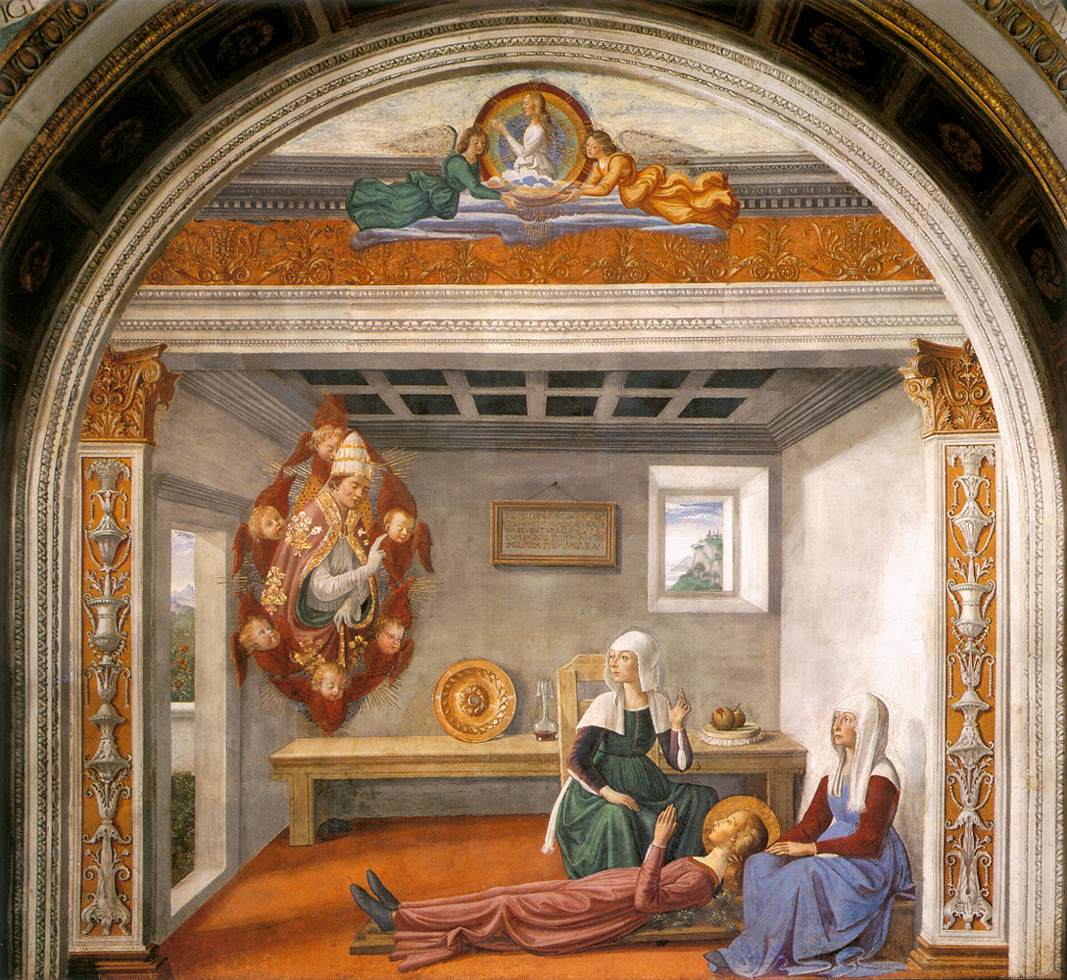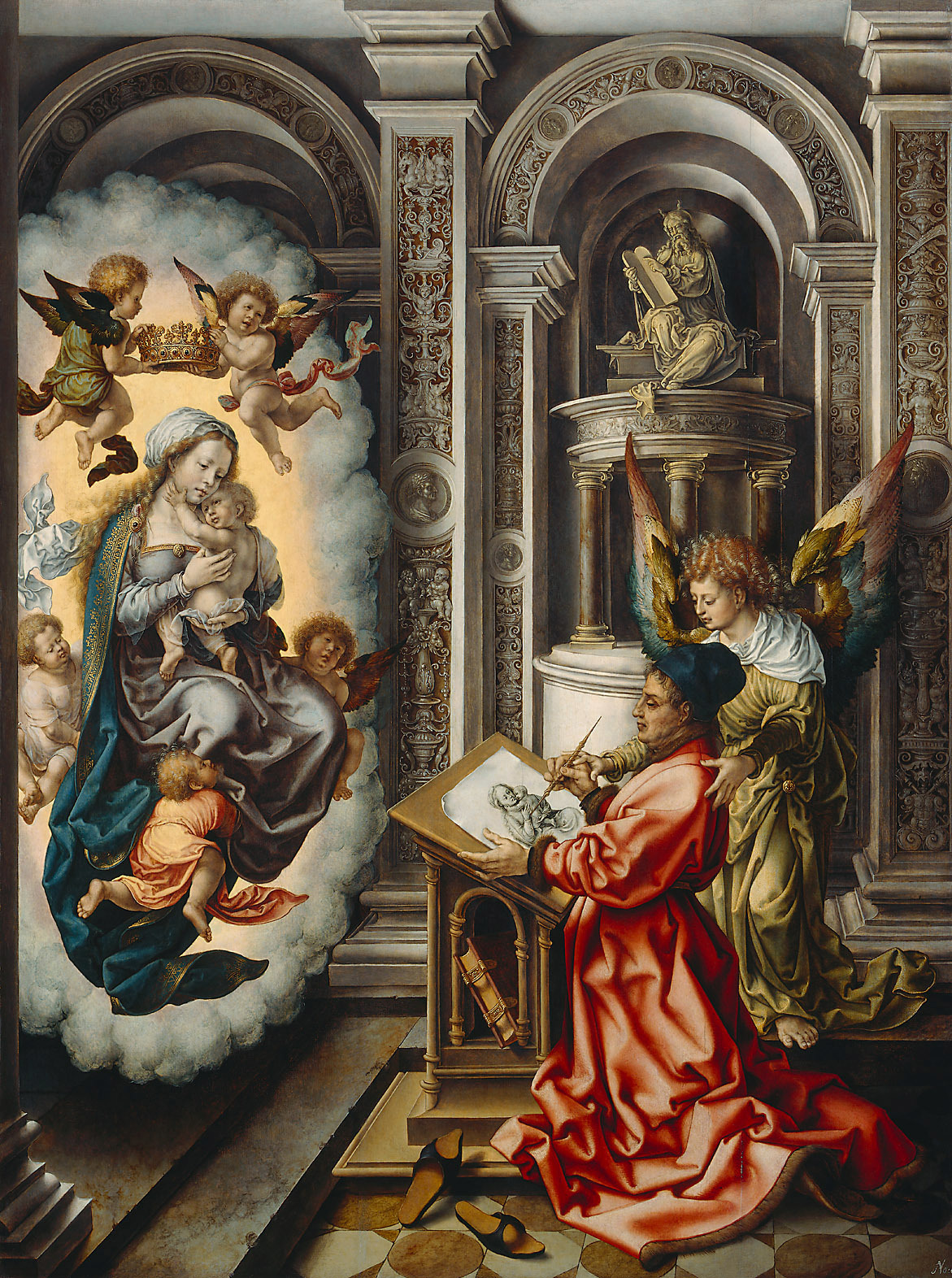|
Andrea Del Verrocchio
Andrea del Verrocchio ( , , ; born Andrea di Michele di Francesco de' Cioni; – 1488) was an Italian sculpture, sculptor, List of Italian painters, painter and goldsmith who was a master of an important workshop in Florence. He apparently became known as ''Verrocchio'' after the surname of his master, a goldsmith. Few paintings are attributed to him with certainty, but important painters were trained at his workshop. His pupils included Leonardo da Vinci, Pietro Perugino and Lorenzo di Credi. His greatest importance was as a sculptor and his last work, the Equestrian statue of Bartolomeo Colleoni in Venice, is generally accepted as his masterpiece. Life Verrocchio was born in Florence in around 1435. His father, Michele di Francesco Cioni, initially worked as a tile and brick maker, then later as a tax collector. Verrocchio never married, and had to provide financial support for some members of his family. He was at first apprenticed to a goldsmith. It has been suggested that ... [...More Info...] [...Related Items...] OR: [Wikipedia] [Google] [Baidu] |
Andrea Del Castagno
Andrea del Castagno () or Andrea di Bartolo di Bargilla (; – 19 August 1457) was an Italian Renaissance painting, Italian Renaissance painter in Florence, influenced chiefly by Masaccio and Giotto, Giotto di Bondone. His works include frescoes in Sant'Apollonia in Florence and the painted equestrian monument of Niccolò da Tolentino (1456) in Florence Cathedral. He in turn influenced the School of Ferrara, Ferrarese school of Cosmè Tura, Francesco del Cossa and Ercole de' Roberti. Life Early years file:Andrea del Castagno fresques de la voûte absidale église San Zaccaria de Venise.jpg, Frescoes in the San Tarasio Chapel, San Zaccaria Andrea del Castagno was born at Castagno d'Andrea, Castagno, a village near Monte Falterona, not far from Florence. During the war between Florence and Milan, he lived in Corella, Italy, Corella, returning to his home after its end. In 1440 he moved to Florence under the protection of Bernadetto de' Medici. Here he painted the portraits of t ... [...More Info...] [...Related Items...] OR: [Wikipedia] [Google] [Baidu] |
Goldsmith
A goldsmith is a Metalworking, metalworker who specializes in working with gold and other precious metals. Modern goldsmiths mainly specialize in jewelry-making but historically, they have also made cutlery, silverware, platter (dishware), platters, goblets, decorative and serviceable utensils, and ceremonial or religious items. Goldsmiths must be skilled in forming metal through file (tool), filing, brazing, soldering, sawing, forging, Casting (metalworking), casting, and polishing. The trade has very often included jewelry-making skills, as well as the very similar skills of the silversmith. Traditionally, these skills had been passed along through apprenticeships; more recently jewelry arts schools, specializing in teaching goldsmithing and a multitude of skills falling under the jewelry arts umbrella, are available. Many universities and junior colleges also offer goldsmithing, silversmithing, and metal arts fabrication as a part of their fine arts curriculum. Gold Compar ... [...More Info...] [...Related Items...] OR: [Wikipedia] [Google] [Baidu] |
Botticelli
Alessandro di Mariano di Vanni Filipepi ( – May 17, 1510), better known as Sandro Botticelli ( ; ) or simply known as Botticelli, was an Italian painter of the Early Renaissance. Botticelli's posthumous reputation suffered until the late 19th century, when he was rediscovered by the Pre-Raphaelites who stimulated a reappraisal of his work. Since then, his paintings have been seen to represent the linear grace of late Italian Gothic and some Early Renaissance painting, even though they date from the latter half of the Italian Renaissance period. In addition to the mythological subjects for which he is best known today, Botticelli painted a wide range of religious subjects (including dozens of renditions of the ''Madonna and Child'', many in the round tondo shape) and also some portraits. His best-known works are '' The Birth of Venus'' and '' Primavera'', both in the Uffizi in Florence, which holds many of Botticelli's works.. Botticelli lived all his life in the same ne ... [...More Info...] [...Related Items...] OR: [Wikipedia] [Google] [Baidu] |
Giovanni Santi
Giovanni Santi ( – 1 August 1494) was an Italian painter and decorator, father of Raphael Sanzio. He was born in 1435 at Colbordolo in the Duchy of Urbino. He studied under Piero della Francesca and was influenced by Fiorenzo di Lorenzo. He was court painter to the Duke of Urbino and painted several altarpieces among other things. He died in Urbino. Life and painting Santi was born in 1435 at Colbordolo in the Duchy of Urbino to Sante di Peruzzolo and Elisabetta di Matteo. He was a petty merchant for a time; he then studied under Piero della Francesca. He was influenced by Fiorenzo di Lorenzo, and seems to have been an assistant and friend of Melozzo da Forlì. He was court painter to Duke of Urbino Federico da Montefeltro and painted several altarpieces, two now in the Berlin Museum, a Madonna in the church of San Francesco in Urbino, one at the church of Santa Croce in Fano, one in the National Gallery at London, and another in the gallery at Urbino; an Annunciation at the ... [...More Info...] [...Related Items...] OR: [Wikipedia] [Google] [Baidu] |
Francesco Botticini
Francesco Botticini (real name Francesco di Giovanni, 1446 – 16 January 1498) was an Italian painter of the Early Renaissance. He was born in Florence, where he remained active until his death in 1498. Although there are only few documented works by Botticini, a considerable corpus has been confidently attributed to him on the basis of style including a number of altarpieces, dozens of small-scale religious panels and a few portraits. Life Early work Botticini was born in Florence in 1446. His father was Giovanni di Domenico di Piero, a ''naibaio'', or painter of playing cards, from whom he probably received his initial artistic training. By 22 July 1459 was a salaried assistant in the workshop of Neri di Bicci. Botticini left Neri's workshop in 24 July 1460. He eventually came into contact with Andrea del Verrocchio, in whose workshop he would have met Leonardo da Vinci, Lorenzo di Credi, Domenico Ghirlandaio, and Pietro Perugino. Though Botticini's presence in Verrocchio' ... [...More Info...] [...Related Items...] OR: [Wikipedia] [Google] [Baidu] |
Domenico Ghirlandaio
Domenico di Tommaso Curradi di Doffo Bigordi (2 June 1448 – 11 January 1494), professionally known as Domenico Ghirlandaio (also spelt as Ghirlandajo), was an Italian Renaissance painter born in Florence. Ghirlandaio was part of the so-called "third generation" of the Florentine Renaissance, along with Verrocchio, the Pollaiolo brothers and Sandro Botticelli. Ghirlandaio led a large and efficient workshop that included his brothers Davide Ghirlandaio and Benedetto Ghirlandaio, his brother-in-law Bastiano Mainardi from San Gimignano, and later his son Ridolfo Ghirlandaio. Many apprentices passed through Ghirlandaio's workshop, including Michelangelo. His particular talent lay in his ability to posit depictions of contemporary life and portraits of contemporary people within the context of religious narratives, bringing him great popularity and many large commissions.Toman, Rolf Life and works Early years Ghirlandaio was born Domenico di Tommaso di Currado di D ... [...More Info...] [...Related Items...] OR: [Wikipedia] [Google] [Baidu] |
Guild Of St Luke
The Guild of Saint Luke was the most common name for a city guild for painters and other artists in early modern Europe, especially in the Low Countries. They were named in honor of the Four Evangelists, Evangelist Saint Luke, Luke, the patron saint of artists, who was identified by John of Damascus as having painted the Mary (mother of Jesus), Virgin's portrait. One of the most famous such organizations was founded in Antwerp. It continued to function until 1795, although by then it had lost its Legal monopoly, monopoly and therefore most of its power. In most cities, including Antwerp, the local government had given the Guild the power to regulate defined types of trade within the city. Guild membership, as a master, was therefore required for an artist to take on apprentices or to sell paintings to the public. Similar rules existed in Delft, where only members could sell paintings in the city or have a shop. The early guilds in Antwerp and Bruges, setting a model that would be ... [...More Info...] [...Related Items...] OR: [Wikipedia] [Google] [Baidu] |
Piero Di Lorenzo De' Medici
Piero di Lorenzo de' Medici (15 February 1472 – 28 December 1503), called Piero the Fatuous or Piero the Unfortunate, was the lord of Florence from 1492 until his exile in 1494. Early life Piero di Lorenzo de' Medici was the eldest son of Lorenzo de' Medici (Lorenzo the Magnificent) and Clarice Orsini. He was raised alongside his younger brother Giovanni, who would go on to become Pope Leo X, and his cousin Giulio, who would later become Pope Clement VII. Piero was educated to succeed his father as head of the Medici family and '' de facto'' ruler of the Florentine state, under figures such as Angelo Poliziano or Marsilio Ficino. However, his feeble, arrogant, and undisciplined character was to prove unsuited to such a role. Poliziano later died of poisoning, very possibly by Piero, on 24 September 1494. Piero was also constantly at odds with his cousins, Lorenzo and Giovanni, the two sons of Pierfrancesco de' Medici, who were both older and richer than Piero. Marriage ... [...More Info...] [...Related Items...] OR: [Wikipedia] [Google] [Baidu] |
Lorenzo De' Medici
Lorenzo di Piero de' Medici (), known as Lorenzo the Magnificent (; 1 January 1449 – 9 April 1492), was an Italian statesman, the ''de facto'' ruler of the Florentine Republic, and the most powerful patron of Renaissance culture in Italy. Lorenzo held the balance of power within the Italic League, an alliance of states that stabilized political conditions on the Italian Peninsula for decades, and his life coincided with the mature phase of the Italian Renaissance and the golden age of Florence. As a patron, he is best known for his sponsorship of artists such as Botticelli and Michelangelo. On the foreign policy front, Lorenzo manifested a clear plan to stem the territorial ambitions of Pope Sixtus IV, in the name of the balance of the Italic League of 1454. For these reasons, Lorenzo was the subject of the Pazzi conspiracy (1478), in which his brother Giuliano di Piero de' Medici, Giuliano was assassinated. The Peace of Lodi of 1454 that he supported among the various List of h ... [...More Info...] [...Related Items...] OR: [Wikipedia] [Google] [Baidu] |
Fra Filippo Lippi
Filippo Lippi ( – 8 October 1469), also known as Lippo Lippi, was an Italian Renaissance painter of the Quattrocento (fifteenth century) and a Carmelite priest. He was an early Renaissance master of a painting workshop, who taught many painters. Sandro Botticelli and Francesco di Pesello (called Pesellino) were among his most distinguished pupils. His son, Filippino Lippi, also studied under him and assisted in some late works. Biography Lippi was born in Florence in 1406 to Tommaso, a butcher, and his wife. He was orphaned when he was two years old and sent to live with his aunt, Mona Lapaccia. Because she was too poor to rear him, she placed him in the neighboring Carmelite convent when he was eight years old. There, he started his education. In 1420, he was admitted to the novitiate of the Order of the Brothers of the Blessed Virgin Mary of Mount Carmel, known commonly as the Carmelites, at the priory of Santa Maria del Carmine in Florence, taking religious vows in the ... [...More Info...] [...Related Items...] OR: [Wikipedia] [Google] [Baidu] |
John Pope-Hennessy
Sir John Wyndham Pope-Hennessy (13 December 1913 – 31 October 1994), was a British art historian. Pope-Hennessy was director of the Victoria and Albert Museum between 1967 and 1973, and director of the British Museum between 1974 and 1976. He was a scholar of Italian Renaissance art. Many of his writings, including the tripartite ''Introduction to Italian Sculpture'', and his magnum opus, ''Donatello: Sculptor'', are regarded as classics in the field. Early years Born into an Irish Catholic family in the Belgravia district of Central London, Pope-Hennesssy's father was Major-General Richard Pope-Hennessy, who was the son of the politician Sir John Pope Hennessy. Pope-Hennessy's mother was Dame Una Pope-Hennessy. He was the elder of two sons; his younger brother, James Pope-Hennessy, was a noted writer. Pope-Hennessy was educated at Downside School, a Catholic boarding school for boys, in Stratton-on-the-Fosse. He then went on to Balliol College, Oxford, where he specia ... [...More Info...] [...Related Items...] OR: [Wikipedia] [Google] [Baidu] |
Donatello
Donato di Niccolò di Betto Bardi ( – 13 December 1466), known mononymously as Donatello (; ), was an Italian Renaissance sculpture, Italian sculptor of the Renaissance period. Born in Republic of Florence, Florence, he studied classical sculpture and used his knowledge to develop an Early Renaissance style of sculpture. He spent time in other cities, where he worked on commissions and taught others; his periods in Rome, Padua, and Siena introduced to other parts of Italy the techniques he had developed in the course of a long and productive career. His ''David (Donatello, bronze), David'' was the first freestanding Nude (art), nude male sculpture since antiquity; like much of his work it was commissioned by the Medici family. He worked with stone, bronze, wood, clay, stucco, and wax, and used glass in inventive ways. He had several assistants, with four perhaps being a typical number. Although his best-known works are mostly statues executed in the round, he developed a ne ... [...More Info...] [...Related Items...] OR: [Wikipedia] [Google] [Baidu] |









